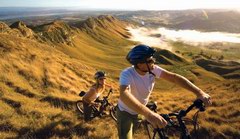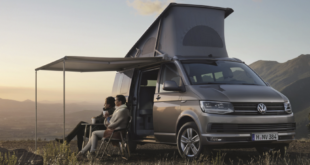Article by Jill Malcolm. Reprinted with permission from ACP Media (Motorhomes & Caravans)
I grew up on the Heretaunga Plains of sunny Hawke’s Bay in the 1960s, when attitudes were conservative and the social emphasis was respectability.
We wore not-to-be noticed clothes, helped our mothers preserve stone fruits in Agee jars and, for extra money, picked peas in the paddocks, apples in the orchards or sorted out rotten sauce-tomatoes on the conveyor belts at J. Wattie’s Canneries.
There were few restaurants, but families gathered on Sundays for aperitifs of sherry followed by large roast lamb dinners culminating in pavalovas or trifles with lashings of whipped cream. Wine was not yet a fashionable tipple, although two local companies were already producing quite passable wine.
For entertainment we went hay making or horse riding or to the movies, and we drank bad coffee in dark little shops with Formica tables or sucked up maple walnut sodas at Rush Munro’s ice cream parlour.
Today, apart from the sun and the sodas, so many things have changed.
The peas, beans and asparagus crops have largely disappeared and in their place are vineyards, olive groves, gardens of lavender and organic farms.
Most obvious is the grip of the grape, for the wines of the region are highly regarded. There are now 70 wineries on the plains of Heretaunga, 4500 hectares (1000 acres) of vineyards and 45 have cellar doors.
More that 25 wineries and growers have banded together to market the Gimblett Gravels appellation applied to wines produced from the stone riverbed soils in the area.
As anybody who loves wine knows, the finest wines are made in special places where climate and geography have conspired to create excellent growing conditions, and around them cultures of wine, food and art have evolved.
For the bon vivant, nothing compares to dining close to an excellent vintage and so there is a plethora of excellent restaurants in the region, and for those who prefer to cook at home or in their motorhome or caravan, there are many fruit and vegetable outlets and markets.
Of course, the three great rivers – the Tutikuri, Tuki Tuki and Tongaroa – still slither on their stony beds across the Heretaunga Plains, the lofty cliffs of Cape Kidnappers still mark the southern margins of the Bay and the same seas beat their endless rhythms on the sand and stony shores.
And, as more and more people from other parts of New Zealand and around the world discover the advantages of living in a place that seems to have it all, the old conservative attitudes have melted away and the Bay is culturally enriched with options in music, theatre, art and craft.
All this combined with a natural beauty has made Hawke’s Bay irresistible to travellers, and the people who live here have come to believe that the best things in life are at home.









Join the Discussion
Type out your comment here:
You must be logged in to post a comment.